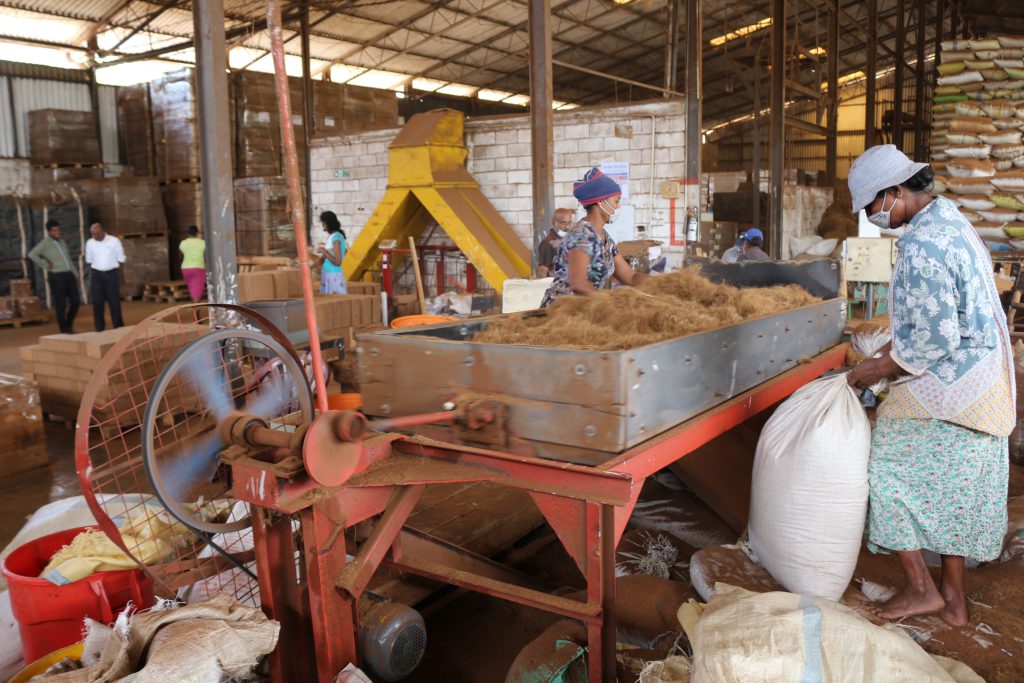The Sustainable Revolution: Unveiling the Potential of the Coconut Fiber Industry. In recent years, the global quest for sustainable and eco-friendly alternatives has led to the rise of industries that prioritize renewable resources. One such industry making waves is the Coconut Fiber Industry. Derived from the husk of coconuts, coconut fiber is gaining popularity for its versatility, sustainability, and numerous applications. This article delves into the intricacies of the Coconut Fiber Industry, exploring its origins, production processes, environmental impact, and the wide array of products driving its growth.
the Potential of the Coconut Fiber Industry
1. The Roots of Coconut Fiber
A. Historical Origins
The use of coconut fibers can be traced back centuries, with historical evidence indicating its widespread use in various cultures. From Asia to the Americas, coconut fiber has played a vital role in crafting materials for shelter, clothing, and even as a means of transportation.
B. Botanical Background
Understanding the anatomy of the coconut is essential to grasp the significance of coconut fiber. Delving into the structure of the coconut husk, we uncover the fibrous material that holds the key to a sustainable and eco-friendly industry.
2. Harvesting and Processing
A. Harvesting Coconuts
The harvesting process is a crucial step in the coconut fiber industry. This chapter explores the traditional and modern methods employed to gather coconuts while ensuring minimal impact on the environment and local communities.
B. Decorticating and Retting
Decorticating, the process of separating the fibers from the coconut husk, and retting, the method of loosening the fibers, are essential steps in the production of high-quality coconut fiber. We examine the various techniques used in these processes and their implications for the industry.
3. The Rise of Sustainable Practices
A. Eco-Friendly Farming
Sustainable farming practices are integral to the coconut fiber industry. This chapter discusses the importance of organic and eco-friendly cultivation methods, shedding light on initiatives that promote biodiversity, soil health, and reduced dependence on chemical inputs.
B. Fair Trade and Social Responsibility
As the industry grows, ensuring fair trade practices and social responsibility becomes paramount. This section explores the initiatives and certifications that promote ethical treatment of workers, community development, and fair compensation within the coconut fiber supply chain.
4. Environmental Impact
A. Carbon Footprint Reduction
Compared to many synthetic alternatives, coconut fiber boasts a lower carbon footprint. This chapter delves into the environmental benefits of using coconut fiber, including reduced greenhouse gas emissions and the potential role it plays in mitigating climate change.
B. Waste Reduction and Circular Economy
The coconut fiber industry is not only a source of raw material but also a contributor to waste reduction. This section explores innovative ways in which coconut husk waste can be repurposed, contributing to a circular economy.
5. Applications Across Industries
A. Agriculture and Horticulture
Coconut fiber’s water retention and aeration properties make it an ideal component in soil and potting mixes. This chapter discusses the role of coconut fiber in sustainable agriculture and horticulture practices.
B. Construction and Geotextiles
The strength and durability of coconut fiber make it a valuable resource in construction materials and geotextiles. From erosion control to building insulation, this section explores the diverse applications within the construction industry.
C. Textiles and Fashion
As the demand for sustainable fashion rises, coconut fiber emerges as a viable alternative in textile production. This chapter explores the growing trend of incorporating coconut fiber into clothing, accessories, and home textiles.
D. Automotive and Manufacturing
Coconut fiber’s lightweight and sturdy nature find applications in automotive manufacturing. This section explores how coconut fiber is contributing to the development of sustainable and lightweight materials in the automotive industry.
6. Challenges and Future Prospects
A. Supply Chain Challenges
Despite its many advantages, the coconut fiber industry faces challenges such as supply chain disruptions, fluctuating market prices, and geopolitical factors. This chapter analyzes these challenges and proposes strategies to address them.
B. Research and Innovation
The future of the coconut fiber industry lies in continuous research and innovation. This section explores ongoing research initiatives, technological advancements, and potential breakthroughs that could further enhance the industry’s sustainability and productivity.
Conclusion
In conclusion, the Coconut Fiber Industry stands at the forefront of sustainable and eco-friendly alternatives. From its historical roots to the modern applications across various industries, coconut fiber is shaping a greener future. By addressing challenges and embracing innovation, this industry holds the potential to revolutionize the way we approach resource utilization, contributing to a more sustainable and environmentally conscious world. Experience the perfect blend of style and sustainability with Coco Shade, adding a touch of natural elegance to your space.

